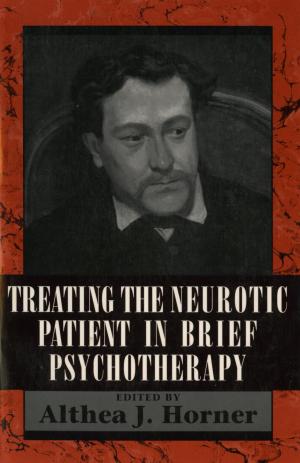Containing Rage, Terror and Despair
An Object Relations Approach to Psychotherapy
Nonfiction, Health & Well Being, Psychology, Clinical Psychology, Psychotherapy| Author: | Jeffrey Seinfeld | ISBN: | 9781461627975 |
| Publisher: | Jason Aronson, Inc. | Publication: | February 1, 1996 |
| Imprint: | Jason Aronson, Inc. | Language: | English |
| Author: | Jeffrey Seinfeld |
| ISBN: | 9781461627975 |
| Publisher: | Jason Aronson, Inc. |
| Publication: | February 1, 1996 |
| Imprint: | Jason Aronson, Inc. |
| Language: | English |
Containing Rage, Terror, and Despair presents Jeffrey Seinfeld's object relations approach to treating various common and debilitating mental disorders. Clinicians are often perplexed and discouraged at seeing their patients suffer even more intensely as they face the defenses, conflicts, and deficits that have impeded their growth and development. Often at the center of this increased suffering is an intense fear of giving up internalized bad objects. When there has been a lack of good enough supportive relationships throughout life, this letting go of bad objects threatens the patient with an unraveling of his or her core psychic structure. The process of internalizing the therapist as a good object is a long and arduous one, during which these patients test to the limit the therapist's capacity for survival and concern. Dr. Seinfeld describes the specific internalized object relations configurations of schizophrenic, schizoid, borderline, depressive, substance abusing, and traumatized patients. Using abundant clinical material, he offers individualized interventions that address each disorder, describing how the therapist can contain the patient's rage, despair, and terror that are evoked as the patient begins to face and release his or her dreaded inner demons.
Containing Rage, Terror, and Despair presents Jeffrey Seinfeld's object relations approach to treating various common and debilitating mental disorders. Clinicians are often perplexed and discouraged at seeing their patients suffer even more intensely as they face the defenses, conflicts, and deficits that have impeded their growth and development. Often at the center of this increased suffering is an intense fear of giving up internalized bad objects. When there has been a lack of good enough supportive relationships throughout life, this letting go of bad objects threatens the patient with an unraveling of his or her core psychic structure. The process of internalizing the therapist as a good object is a long and arduous one, during which these patients test to the limit the therapist's capacity for survival and concern. Dr. Seinfeld describes the specific internalized object relations configurations of schizophrenic, schizoid, borderline, depressive, substance abusing, and traumatized patients. Using abundant clinical material, he offers individualized interventions that address each disorder, describing how the therapist can contain the patient's rage, despair, and terror that are evoked as the patient begins to face and release his or her dreaded inner demons.















